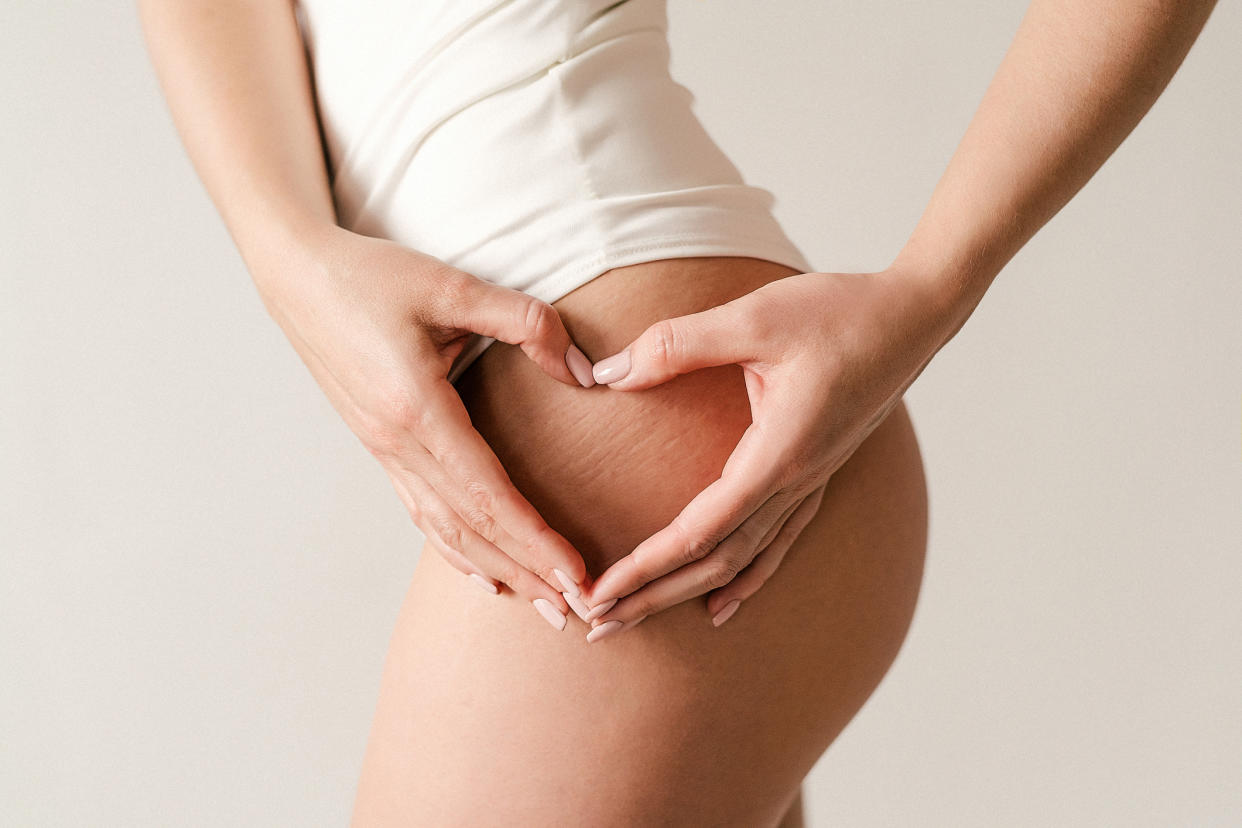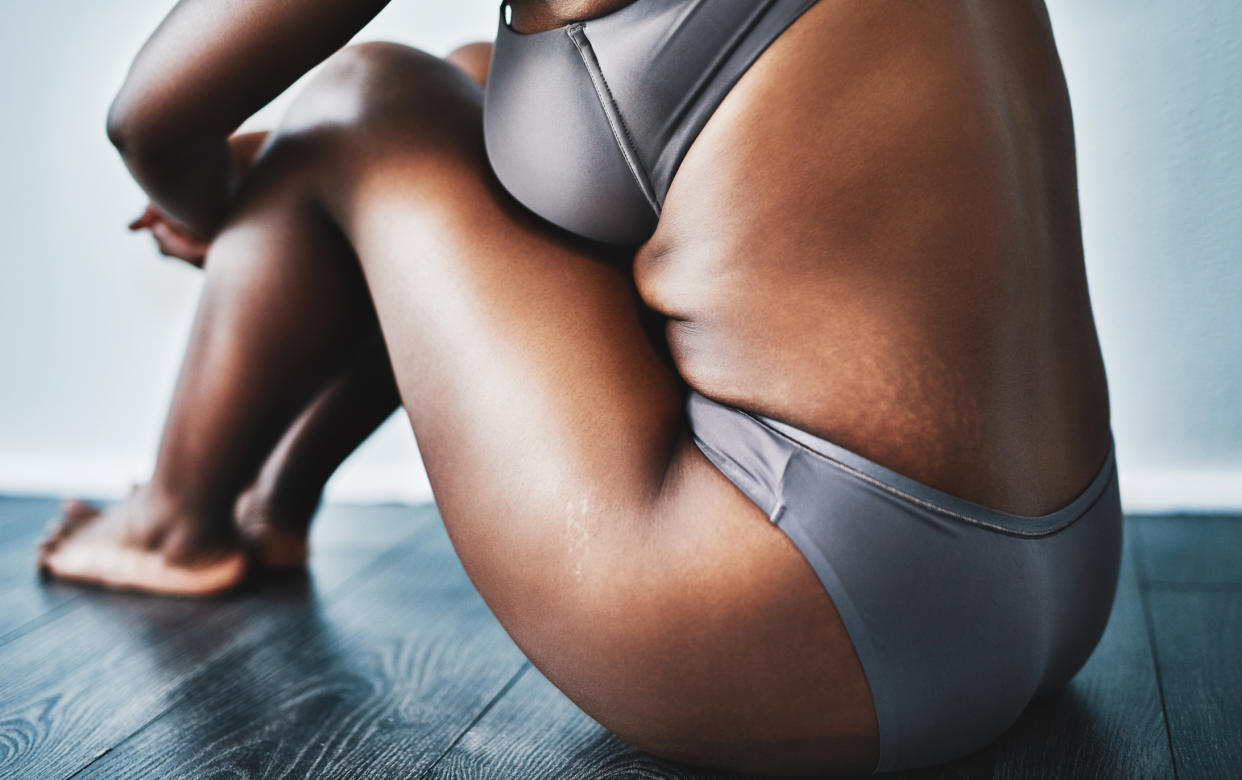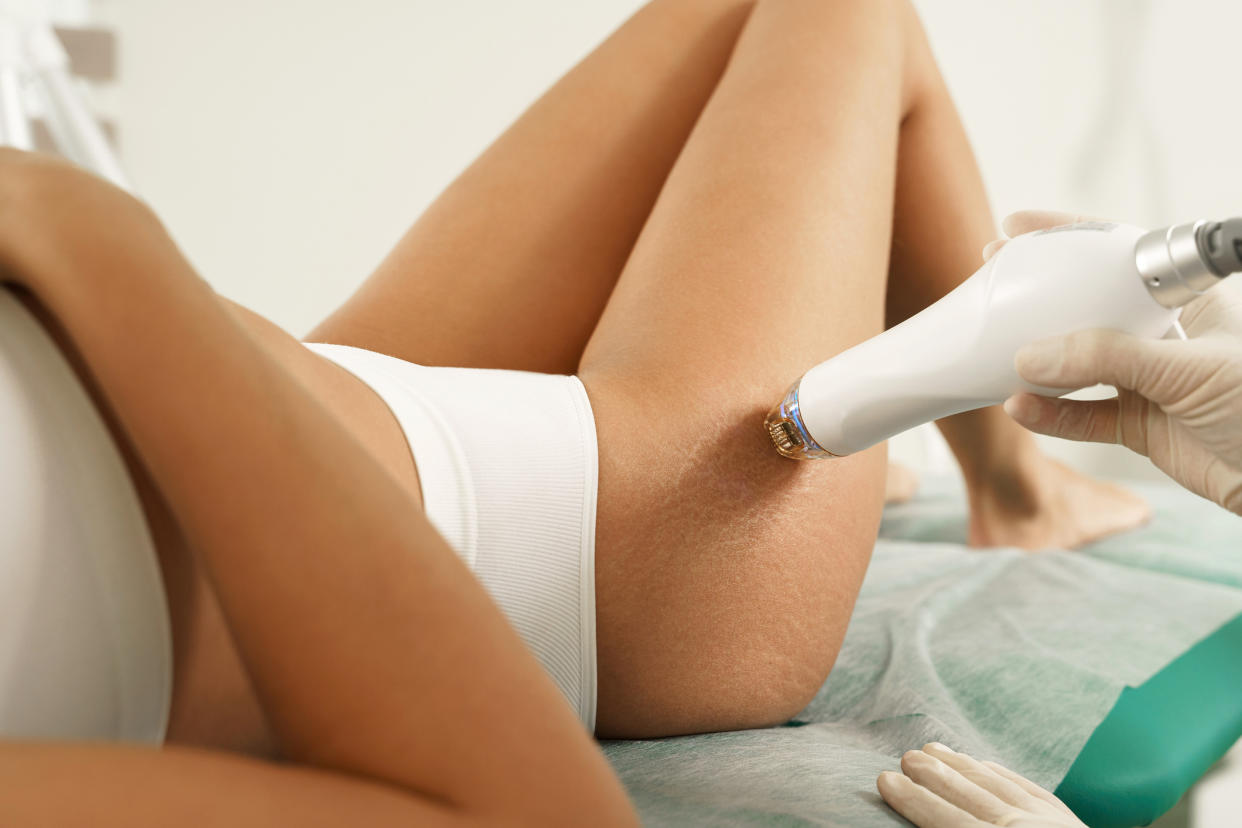Can you reverse stretch marks? What works according to an NHS doctor

Despite steps forward in normalising the appearance of stretch marks, it seems the feathery marks are still considered something of a beauty flaw for many women.
A recent survey, by Serica™ Skincare, found that the majority of women have a negative relationship with their stretch marks, with more than half of women (59%) citing them as one of the top parts of the appearance they could change.
Roughly two out of three say they would feel more confident (66%), more attractive (66%), or sexier (62%) if they didn't have stretch marks.
But what actually causes the silvery skin blemishes and is it ever really possible to get rid of them?
What are stretch marks?
Stretch marks are lines or streaks on the skin, which can be pink, purple or white in colour (depending on their age).
"They occur where there is a tear in the dermis (middle-layer of the skin) accompanied by loss of elasticity," explains Dr Sasha Dhoat, consultant dermatologist at Stratum Clinics.
"Commonly occurring on the stomach, hips, thighs, back and breasts, they are generally associated with rapid changes in girth such as tummy expansion in pregnancy, which may be normal and physiological such as a growth spurt during puberty or whilst pregnant or if body building."
Dr Dhoat explains that while the skin is usually fairly elastic when it is stretched quickly this weakens the collagen and elastin fibres (the scaffolding of the skin, which gives it ‘plumpness’), giving rise to a scar-like appearance with the epidermis thinning over the top.
"These elastin fibres give the skin suppleness but if the area is stretched past its threshold, it creates a tear and scars the skin in the form of a stretch mark," she adds. "Some skin can be more resilient, while others are genetically more fragile. Sensitive and fragile skin can also lack the oils that give it suppleness to be able to stretch."
Though stretch marks can appear all over the body, the most common affected areas are the stomach, thighs, and chest.

Can stretch marks be prevented or reversed?
Prevention is not very easy, or even possible as such.
"Occasionally however they do spontaneously regress," Dr Dhoat advises. "In pregnancy, we advise to moisturise very regularly. Rubbing in oils or Vaseline might help but there is no strong evidence to support this."
While certain celebrities are comfortable showing their stretch marks off, others are keen to try anything to get rid of them, with some women turning to a new treatment, EndyMed at Cure Medical, reportedly loved by Kim Kardashian, the Beckhams and Millie Mackintosh to reduce the appearance of the fine lines that typically appear during or after pregnancy or following a change in body size.
"As stretch marks can be quite visible on the skin, this can be the cause of insecurity for many women," explains aesthetic doctor and NHS consultant, Dr Judy Todd. "However, it’s important to remember that stretch marks are normal! Factors such as genetics will have a lot to do with why women have stretch marks and also, some people simply naturally have thicker and more elastic skin than others."
While stretch marks do tend to fade over time, technology continues to advance when it comes to the treatment of stretch marks. While they may not cure or completely eliminate them, there are a number of different treatments, which can help patients manage the appearance of stretch marks.
Stretch mark treatments
Skin tightening
Skin tightening procedures can help improve the appearance of stretch marks by tightening and firming the skin around the affected area. "This can help to reduce the depth and severity of the stretch marks, making them less noticeable," Dr Dhoat advises.
Topical creams and lotions
Some creams and lotions can help reduce the appearance of stretch marks and improve the texture and elasticity of the skin.
Fractional laser resurfacing
The use of a laser makes it possible to break up scar tissue that’s clouding the textural difference. While clinics use a variety of lasers, Dr Dhoat says the mechanism is the same.
"The energy from the lasers creates tiny 'thermal destruction' in the skin that stimulate the growth of new, healthy skin cells to replace old, damaged cells," she explains. "It accelerates collagen production, skin turnover and the body’s natural healing process."
As treatments progress patients often notice the colour of the stretch mark and scar diminish. "The early stretch marks and scars, usually red in colour, notably have the most dramatic results, however all types of stretch marks and scars can achieve noticeable improvement," Dr Dhoat adds. "This technology is safe and effective with minimal side-effects It has a wide safety margin and minimal downtime."

Medical skin needling
Medical skin needling involves the use of a disposable, sterile needles to create a multitude of tiny puncture wounds to the dermis which induces the release of growth factors that stimulate the production of new collagen and elastin.
Dr Dhoat says skin needling can be used to reduce the appearance of stretch marks. Also referred to as Collagen Induction Therapy and Microneedling, it is aimed at stimulating the body’s own collagen production to reduce the appearance of stretch marks.
The celeb-backed EndyMed treatment fits into this bracket and incorporates four advanced radio frequency and microneedling technologies and uses controlled thermal energy to penetrate the skin and stimulate collagen production. The result is firmer, tighter, lifted skin with stretch marks noticeably reduced.
Dr Todd says the treatment is suitable for all skin types and initial results can often be seen immediately.
Better still, there's little side effects.
"Although patients may experience some mild redness for just 1-2 days post-treatment, there’s extremely limited downtime meaning that you can return to your routine as normal unlike a surgical procedure," Dr Todd adds.
Skin health: Read more
Vera Wang credits McDonalds for ageless skin, but Dermatologist warns against it (Yahoo Life UK, 4-min read)
Top foods to eat to combat rosacea and acne - and what to avoid (Yahoo Life UK, 4-min read)
From treatments to products, here's your complete guide to getting rid of acne scars (Women's Health, 11-min read)


